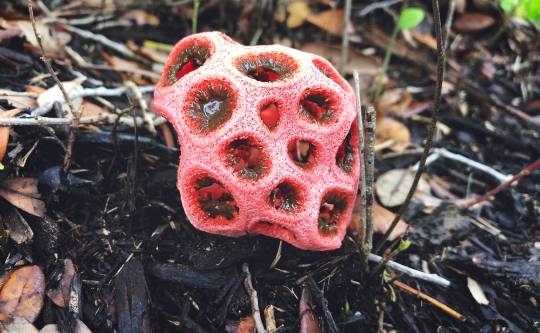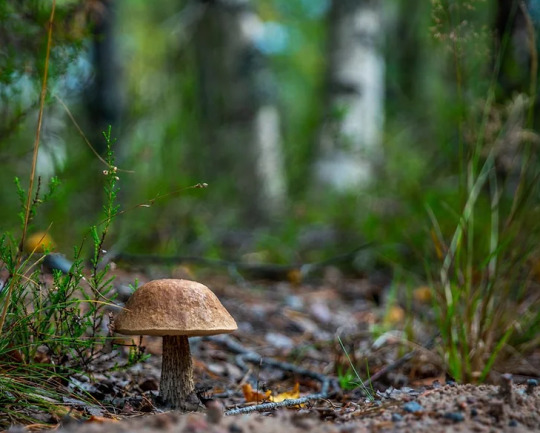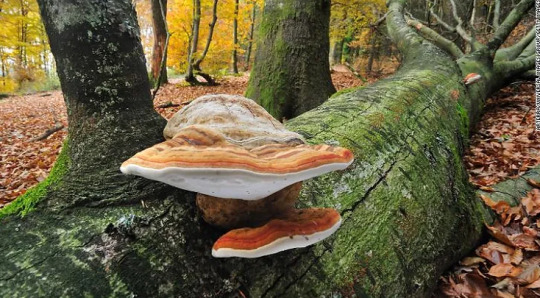#The ecological role of mushrooms in breaking down dead plant matter
Explore tagged Tumblr posts
Text
The Mysterious World of Mushrooms: From Edible Delights to Medicinal Wonders
One of the most intriguing secrets of nature is the world of mushrooms. These fascinating fungi can be found in nearly every habitat on Earth and come in a wide range of shapes, sizes, and colors. They are not only delicious to eat but also have many medicinal properties and play an important role in the ecosystem. One of the most well-known types of mushrooms is the edible mushroom. These…

View On WordPress
#and textures#colors#Cultivating mushrooms at home#Edible mushrooms and their culinary uses#Exploring the mysterious world of mushrooms#Identifying poisonous mushrooms and mushroom safety#Medicinal mushrooms and their health benefits#Mushrooms#Mushrooms in sustainable agriculture and forest management#Mushrooms in traditional medicine#Symbiotic relationships between mushrooms and trees#The diversity of mushrooms shapes#The ecological role of mushrooms in breaking down dead plant matter#World of Mushrooms
0 notes
Text

The kingdom of Fungal Life
When we think about the natural world, our minds often gravitate towards lush forests, vibrant flowers, and majestic animals. However, lurking beneath the surface and often hidden from plain sight is a kingdom of life that is as essential as it is mysterious: fungi. These remarkable organisms play a crucial role in the ecosystem, contributing to processes that sustain life on Earth. Let’s delve into the captivating world of fungi and explore their diverse and critical roles in nature.
Fungi belong to their own kingdom, separate from plants, animals, and bacteria. This diverse group includes yeasts, molds, and mushrooms. Unlike plants, fungi do not perform photosynthesis; instead, they obtain nutrients through absorption. They secrete enzymes that break down complex organic matter into simpler compounds, which they then absorb. This mode of nutrition classifies them as saprophytes (decomposers), parasites, or mutualists.
One of the most vital roles fungi play in nature is that of decomposers. They break down dead organic material, such as fallen leaves, dead trees, and animal carcasses. This decomposition process is crucial for nutrient cycling, as it releases essential elements like carbon, nitrogen, and phosphorus back into the soil, making them available for plants and other organisms. Without fungi, these nutrients would remain locked in dead matter, disrupting the balance of ecosystems.
Many fungi form symbiotic relationships with plants through structures known as mycorrhizae. These fungi colonize plant roots, extending far into the soil and increasing the surface area for water and nutrient absorption. In return, the fungi receive carbohydrates produced by the plant through photosynthesis. This mutualistic relationship enhances plant growth, resilience to stress, and nutrient uptake, illustrating a remarkable example of cooperation in nature.
While many fungi play beneficial roles, some can be pathogenic, causing diseases in plants, animals, and humans. For instance, the fungus Ophiocordyceps infects ants and other insects, eventually controlling their behavior to facilitate spore dispersal. In plants, fungi can cause devastating diseases like rusts, smuts, and blights, affecting crops and natural vegetation. Understanding these pathogenic interactions is crucial for managing agricultural health and preserving natural ecosystems.
Beyond their ecological roles, fungi have significant applications in medicine and biotechnology. The discovery of penicillin, derived from the mold Penicillium, revolutionized medicine by providing the first effective antibiotic. Fungi also produce other medically important compounds, such as immunosuppressants and cholesterol-lowering drugs. In biotechnology, fungi are used in processes ranging from fermentation in food production to the breakdown of pollutants in bioremediation.
Fungi exhibit a stunning variety of forms and colors, particularly noticeable in mushrooms and molds. From the luminescent glow of bioluminescent fungi to the intricate patterns of mushroom caps, fungi contribute to the aesthetic diversity of nature. Some fungi even exhibit bizarre and fascinating behaviors, such as the slime molds that can navigate mazes or the cordyceps fungi that create “zombie” insects.
#mushroom#fungi#fungus#mushrooms#artists on tumblr#nature#original photographers#original photography#photography#photographers on tumblr#Washington#pacific northwest#forest#cottagecore#explore
20 notes
·
View notes
Text
Unveiling the Mysteries of Mycology with Basidium Equilibrium
Basidium Equilibrium is a prominent name in the world of mycology. As a passionate and dedicated figure in the field, Bas, the founder of Basidium Equilibrium, has long been fascinated by the intricate world of mushrooms and the vital role they play in nature. With an unquenchable curiosity and a desire to share the wonders of mycology with the world, Bas established Basidium Equilibrium as a hub for all things fungal.
Exploring the Fungal Realm:
Mycology, the study of fungi, might not be as well-known as other branches of biology, but it is a field brimming with fascinating discoveries and ecological importance. At Basidium Equilibrium, the focus is on unraveling the mysteries of these remarkable organisms and shedding light on their incredible roles in the environment.
The Diversity of Fungi:
One of the most captivating aspects of mycology is the sheer diversity of fungi that exist in the natural world. From the minute mycorrhizal fungi that form symbiotic relationships with plants to the towering and majestic mushrooms found in forests, Basidium Equilibrium explores the entire spectrum of fungal life. With over 100,000 species already identified, and many more yet to be discovered, there's no shortage of intriguing subjects for exploration.
The Ecological Significance:
Fungi play a pivotal role in ecosystems worldwide. They are nature's recyclers, breaking down organic matter and returning essential nutrients to the soil. Mycorrhizal fungi facilitate nutrient uptake in plants, while decomposers like saprophytic fungi are essential for decomposing dead organic material. Basidium Equilibrium delves deep into these ecological relationships, emphasizing the importance of fungi in maintaining the balance of nature.

Medicinal and Culinary Delights:
Beyond their ecological significance, fungi have found their way into human culture in numerous ways. Basidium Equilibrium explores the medicinal properties of certain fungi, such as the reishi mushroom, which is believed to have immune-boosting properties. Additionally, the culinary world owes a debt of gratitude to fungi, with gourmet mushrooms like chanterelles and truffles gracing our plates. Basidium Equilibrium provides insights into the culinary and medicinal uses of fungi, encouraging us to explore their potential in our own lives.
Mycology in the Modern World:
As our understanding of fungi grows, so does their relevance in modern society. Fungi are used in bioremediation to clean up polluted environments, in the production of biofuels, and even as a source of sustainable packaging materials. Basidium Equilibrium keeps a close eye on the latest developments in mycology, highlighting how fungi are shaping our future in unexpected ways.
Educational Initiatives:
Basidium Equilibrium is not just a platform for enthusiasts; it's also a resource for those eager to learn more about mycology. Bas's passion for teaching and sharing knowledge is evident in the educational initiatives hosted by the organization. From workshops and webinars to informative articles and videos, there's a wealth of information available for individuals interested in delving deeper into the world of fungi.
Conservation and Preservation:
With the increasing threats to ecosystems worldwide, the preservation of fungal biodiversity has never been more crucial. Basidium Equilibrium actively promotes conservation efforts and emphasizes the importance of protecting fungi and their habitats. The organization advocates for responsible foraging practices and raises awareness about the impact of habitat destruction on fungal diversity.
The Citizen Scientist Movement:
One of the most exciting developments in mycology is the involvement of citizen scientists. Basidium Equilibrium encourages people from all walks of life to become amateur mycologists and contribute to our understanding of fungi. With the rise of smartphone apps that help identify mushrooms and online communities where enthusiasts can share their findings, it's easier than ever to become a part of the mycological community.
Basidium Equilibrium is not just a hub for mycologists; it's a celebration of the fungal kingdom and an invitation for everyone to explore its mysteries. Through their dedication to education, conservation, and the dissemination of knowledge, Bas and Basidium Equilibrium are ensuring that the world of mycology continues to captivate and inspire. Whether you're a seasoned mycophile or someone just beginning to appreciate the wonders of fungi, Basidium Equilibrium welcomes you to embark on a journey into the fascinating world of mycology. Together, we can unveil the mysteries of these incredible organisms and gain a deeper appreciation for the role they play in the equilibrium of our natural world.
1 note
·
View note
Text
How Many Types Of Mushroom Are There
1. Introduction
Mushrooms, a fascinating type of fungus, have captivated human curiosity for centuries. These enigmatic organisms are found in diverse environments worldwide, with numerous species exhibiting distinctive shapes, colors, and textures. From the delightful culinary experiences they provide to their essential ecological roles, mushrooms have become an integral part of human culture. In this article, we will explore the vast world of mushrooms and delve into the multitude of species that exist.
2. Understanding Mushrooms
Mushrooms belong to the fungi kingdom, and they differ significantly from plants and animals. Unlike plants, they do not perform photosynthesis; instead, they obtain nutrients by decomposing organic matter. Mushrooms have a complex network of thread-like structures called mycelium, which helps them break down dead materials and recycle nutrients back into the ecosystem.
3. The Diversity of Mushroom Species
Mushrooms come in various shapes and sizes, each belonging to a distinct species. Here are fifteen noteworthy types of mushrooms:
3.1. Agaricus
Agaricus, commonly known as the white button mushroom, is one of the most widely cultivated mushrooms globally. It boasts a mild flavor and a versatile nature, making it a popular choice in various culinary dishes.
3.2. Boletus
Boletus mushrooms, commonly referred to as porcini or cep, have a rich, nutty flavor. They are favored by chefs for their culinary excellence and are often sought after by mushroom foragers.
3.3. Amanita
The Amanita genus includes the iconic fly agaric, recognizable by its bright red cap with white spots. While some Amanita species are highly toxic, others have been used in traditional medicine.
3.4. Chanterelle
Chanterelles are renowned for their apricot-like aroma and delicate, trumpet-shaped appearance. They are prized in haute cuisine and are found in both temperate and tropical regions.
3.5. Morel
Morels have a unique appearance with their honeycomb-like caps. These mushrooms are highly prized for their smoky, nutty flavor and are popular in gourmet cooking.
3.6. Shiitake
Originating from East Asia, shiitake mushrooms are well-known for their savory flavor and meaty texture. They are widely used in Asian cuisine and have gained popularity worldwide.
3.7. Oyster Mushroom
Oyster mushrooms, named for their resemblance to oyster shells, come in various colors and are valued for their delicate taste and velvety texture.
3.8. Enoki Mushroom
Enoki mushrooms have long, slender stems and small, button-like caps. They are commonly used in soups and stir-fries.
3.9. Porcini
Porcini mushrooms, also known as king bolete, are cherished for their intense umami flavor. They are popular in Italian cuisine and are available in both fresh and dried forms.
3.10. Reishi
Reishi mushrooms have been used in traditional medicine for centuries, particularly in Asian cultures, for their potential health benefits.
3.11. Maitake
Maitake, also known as hen-of-the-woods, has a unique frond-like structure and a rich, earthy taste. It is believed to have various health-promoting properties.
3.12. Lion's Mane
Lion's mane mushrooms have long, cascading spines and a delicate, seafood-like flavor. They are often used as a meat substitute in vegetarian dishes.
3.13. Coral Mushroom
Coral mushrooms have a coral-like appearance and come in vibrant colors. They are typically found in woodland habitats.
3.14. Truffle
Truffles are highly sought after for their distinctive aroma and are considered a delicacy in gourmet cuisine. They grow underground and require specific conditions to thrive.
3.15. Cordyceps
Cordyceps are unique in that they parasitize insects, replacing their tissue and growing from their bodies. They are used in traditional medicine and dietary supplements.
4. The Role of Mushrooms in Nature
Mushrooms play crucial roles in the ecosystem, acting as decomposers, helping recycle nutrients, and maintaining soil health. Additionally, some mushrooms form symbiotic relationships with trees, facilitating nutrient exchange and enhancing forest resilience.
5. Culinary Uses of Mushrooms
The culinary world has embraced mushrooms for their diverse flavors and textures. From simple sautéed dishes to elaborate gourmet recipes, mushrooms have become a staple ingredient in various cuisines worldwide.
6. Medicinal Properties of Mushrooms
Certain mushrooms, such as reishi and maitake, have long been used in traditional medicine for their potential health benefits. Modern research is also exploring their therapeutic properties and potential applications.
7. The Fascinating World of Fungi
Mushrooms are just one aspect of the vast fungal kingdom. Exploring other fungi, such as molds and yeasts, reveals a fascinating world of diversity and ecological importance.
8. Cultivating Mushrooms at Home
Interested in growing mushrooms at home? Cultivating mushrooms can be a rewarding experience, and there are various techniques and kits available for beginners.
9. Mushroom Foraging Tips and Safety Precautions
Foraging for wild mushrooms can be an exciting hobby, but it requires caution. Understanding the basics of mushroom identification and safety is essential to avoid potential risks.
10. Environmental Importance of Fungi
Beyond their roles in decomposition, fungi contribute significantly to nutrient cycling, mycorrhizal symbiosis, and even bioremediation, playing crucial roles in environmental sustainability.
11. Mycophobia: Fear of Mushrooms
Mycophobia, the irrational fear of mushrooms, can be a challenging phobia to overcome. Understanding the reasons behind this fear can help dispel myths and misconceptions.
12. Ethnomycology: Mushrooms in Culture and Tradition
Mushrooms hold cultural significance in various societies, often being associated with rituals, art, and folklore. Ethnomycology explores the human-fungal relationship throughout history.
13. The Future of Mushroom Research
Ongoing research on mushrooms is uncovering new potential applications, from sustainable materials to innovative medical treatments. The future of mycology is promising and full of possibilities.
14. Conclusion
Mushrooms, with their incredible diversity and ecological significance, continue to captivate human imagination. From culinary delights to potential medicinal breakthroughs, these enigmatic organisms enrich our lives in countless ways.
In recent years, there has been a growing interest in alternative approaches to enhance mental clarity, creativity, and overall well-being. One such practice gaining popularity is microdosing. Deadhead Chemist, a reputable brand, proudly introduces Microdose LSD and Microdose DMT, offering a unique experience tailored to individual needs. This article explores the concept of microdosing, its benefits, and how Deadhead Chemist's premium-quality Canadian-made products can revolutionize your approach to mindful living.
15. FAQs
Q: Are all mushrooms safe to eat? A: No, while many mushrooms are edible and delicious, some can be toxic or even deadly. It's crucial to be absolutely certain of a mushroom's identity before consumption.
Q: Can I grow mushrooms indoors? A: Yes, you can grow certain mushroom varieties indoors using kits and substrates designed for home cultivation.
Q: Are there psychedelic mushrooms? A: Yes, some mushroom species contain psychoactive compounds. These should only be consumed responsibly where legal and with proper knowledge.
Q: How many mushroom species are yet to be discovered? A: It is estimated that there are still thousands of mushroom species yet to be discovered and classified by scientists.
Q: Can mushrooms help with environmental conservation? A: Yes, mushrooms play essential roles in maintaining ecosystem balance and can be used in bioremediation efforts to clean up polluted environments.
0 notes
Text
Fascinating Fungi & Their on/off Friendship with Trees
Tree fungi are a diverse group of organisms that play important ecological roles in forest ecosystems. They are a crucial component of the forest ecosystem, as they decompose dead organic matter, recycle nutrients, and form symbiotic relationships with living trees.

In this blog, we will explore the fascinating world of tree fungi and their impact on our environment!
Fungi are vital to our forest eco-systems, the are the decomposers, without fungi everything that has ever died would still be there...whole. It is mad to think just how much we take them for granted!
Fungi are eukaryotic organisms that are essential for decomposing organic matter in the environment. Fungi are one of the most diverse groups of organisms on the planet, with over 100,000 known species. They are found in almost every environment, from the depths of the ocean to the tops of mountains. Fungi are divided into two main categories: macroscopic fungi, which produce visible fruiting bodies like mushrooms and toadstools, and microscopic fungi, which do not produce visible fruiting bodies and are commonly referred to as molds or mildews.
Tree fungi are a type of macroscopic fungi that grow on or within trees. They can be beneficial or harmful to the tree, depending on the type of fungi and the severity of the infection. Some tree fungi form mutualistic relationships with the tree and help it to absorb nutrients from the soil. Others cause damage to the tree by weakening its structure or by causing rot.
One of the most common types of tree fungi is the bracket fungi, this includes common fungi such as Hoof Fungus (Fomes Fomentarius), the Velvet-top Fungus (Phaeolus suchweinitzii) or any of the Ganoderma species (such as Artists' fungus) . These fungi grow on the trunks or branches of trees, forming large, shelf-like structures that can be several feet across. They are often seen on dead or dying trees, where they play an important role in the process of decomposition.

Fomes Fomentarius or 'hoof fungus', a bracket fungi that causes decay nf rot in the heartwood of trees.
Another type of tree fungus is the Armillaria root rot fungus, which is commonly known as the honey fungus. This type of fungi attacks the roots of trees and can cause them to become weak and eventually die. The honey fungus is particularly damaging to fruit trees and can lead to significant crop losses.

Armillaria mellea or 'honey fungus'. Honey fungus spreads underground, attacking and killing the roots of perennial plants and then decaying the dead wood. It is the most destructive fungal disease in UK gardens.
Another common type of tree fungi is the mycorrhizal fungi. Mycorrhizal fungi help the tree to absorb nutrients from the soil, particularly phosphorus and nitrogen. In exchange, the tree provides the fungi with sugars and other nutrients that it produces through photosynthesis. This mutualistic relationship is essential for the health and growth of many trees. This relationship is so important that it is estimated that over 90% of all tree species rely on mycorrhizal fungi for their survival.
Tree fungi also play a vital role in the cycling of nutrients in the forest ecosystem. They break down dead organic matter, releasing nutrients back into the soil where they can be taken up by living trees. This process is essential for the health of the forest ecosystem, as it ensures that nutrients are constantly being recycled and made available to living organisms.

Mycorrhizae- the tiny white roots that make a huge difference to your tree/plant/shrub's health!
Despite their importance in the forest ecosystem, tree fungi are often overlooked by people. Many people see them as unsightly or even dangerous, as some species of tree fungi can cause decay in the wood of living trees. However, the vast majority of tree fungi are harmless, and that they play a vital role in the health and functioning of the forest ecosystem.
It is important to remember that tree fungi are an essential part of our environment, but they can also be harmful to trees if they are not properly managed. If you suspect that your tree is infected with a fungus, it is essential to contact a professional arborist who can diagnose the problem and recommend the appropriate treatment. Regular tree care, including pruning and fertilization, can also help to prevent fungal infections and keep your trees healthy and strong.

Image from a recent CPD course we undertook in tree inspection, with a primary focus on identifying fungi.
Check out the giant brackets of Ganoderma!
In conclusion, tree fungi are a diverse and important group of organisms that play crucial ecological roles in forest ecosystems. They decompose dead organic matter, recycle nutrients, and form symbiotic relationships with living trees. Although they are often overlooked, they are essential for the health and functioning of the forest ecosystem, and should be appreciated and protected. If you have trees on your property, it is essential to be aware of the signs of fungal infections and to take appropriate steps to manage them.
By working with a professional arborist and practicing regular tree care, you can help to ensure that your trees remain healthy and strong for years to come.
0 notes
Text
The kingdom of Fungal Life
When we think about the natural world, our minds often gravitate towards lush forests, vibrant flowers, and majestic animals. However, lurking beneath the surface and often hidden from plain sight is a kingdom of life that is as essential as it is mysterious: fungi. These remarkable organisms play a crucial role in the ecosystem, contributing to processes that sustain life on Earth. Let’s delve into the captivating world of fungi and explore their diverse and critical roles in nature.
Fungi belong to their own kingdom, separate from plants, animals, and bacteria. This diverse group includes yeasts, molds, and mushrooms. Unlike plants, fungi do not perform photosynthesis; instead, they obtain nutrients through absorption. They secrete enzymes that break down complex organic matter into simpler compounds, which they then absorb. This mode of nutrition classifies them as saprophytes (decomposers), parasites, or mutualists.
One of the most vital roles fungi play in nature is that of decomposers. They break down dead organic material, such as fallen leaves, dead trees, and animal carcasses. This decomposition process is crucial for nutrient cycling, as it releases essential elements like carbon, nitrogen, and phosphorus back into the soil, making them available for plants and other organisms. Without fungi, these nutrients would remain locked in dead matter, disrupting the balance of ecosystems.
Many fungi form symbiotic relationships with plants through structures known as mycorrhizae. These fungi colonize plant roots, extending far into the soil and increasing the surface area for water and nutrient absorption. In return, the fungi receive carbohydrates produced by the plant through photosynthesis. This mutualistic relationship enhances plant growth, resilience to stress, and nutrient uptake, illustrating a remarkable example of cooperation in nature.
While many fungi play beneficial roles, some can be pathogenic, causing diseases in plants, animals, and humans. For instance, the fungus Ophiocordyceps infects ants and other insects, eventually controlling their behavior to facilitate spore dispersal. In plants, fungi can cause devastating diseases like rusts, smuts, and blights, affecting crops and natural vegetation. Understanding these pathogenic interactions is crucial for managing agricultural health and preserving natural ecosystems.
Beyond their ecological roles, fungi have significant applications in medicine and biotechnology. The discovery of penicillin, derived from the mold Penicillium, revolutionized medicine by providing the first effective antibiotic. Fungi also produce other medically important compounds, such as immunosuppressants and cholesterol-lowering drugs. In biotechnology, fungi are used in processes ranging from fermentation in food production to the breakdown of pollutants in bioremediation.
Fungi exhibit a stunning variety of forms and colors, particularly noticeable in mushrooms and molds. From the luminescent glow of bioluminescent fungi to the intricate patterns of mushroom caps, fungi contribute to the aesthetic diversity of nature. Some fungi even exhibit bizarre and fascinating behaviors, such as the slime molds that can navigate mazes or the cordyceps fungi that create “zombie” insects.

#mushroom#fungi#fungus#mushrooms#artists on tumblr#nature#original photographers#original photography#photography#photographers on tumblr#Washington#pacific northwest#forest#cottagecore#explore
14 notes
·
View notes